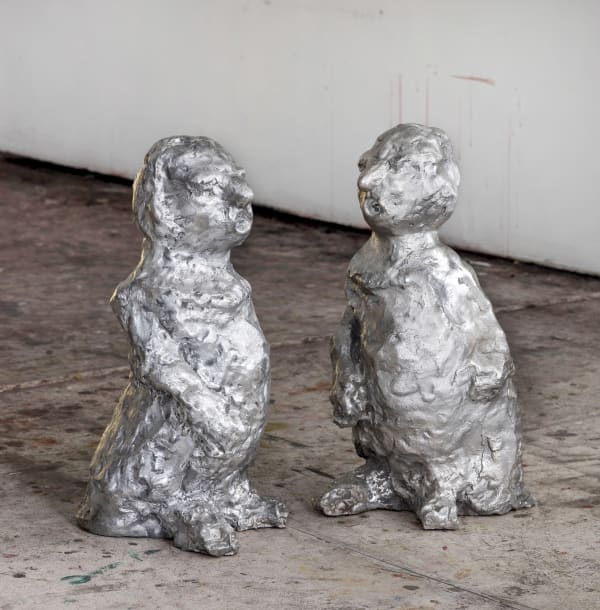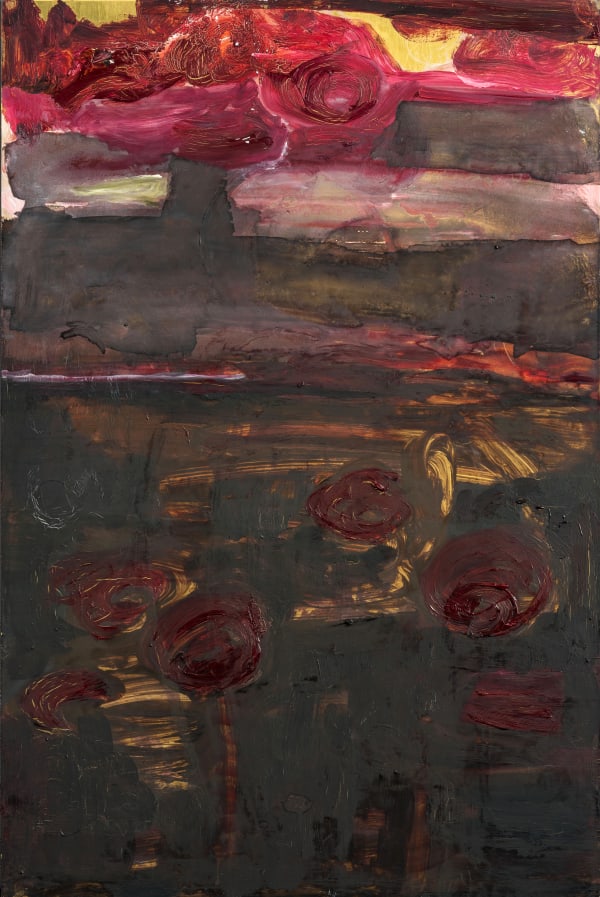Karin Lind Swedish, b. 1959
Karin Lind's artistic work revolves around three-dimensional creations of space, in the form of installations and architectural elements placed directly in the landscape, as well as more traditional round sculptures in bronze. The three-dimensional aspect compels us as observers to engage with the work as a whole while reminding us of our own existence as physical beings. The materials Lind uses evoke urban environments such as airports, various waiting rooms, shopping centers, and other transitional spaces liberated from both history and nostalgia.
However, in Lind's hands, the same materials carry an expressive and poetic charge, used to explore fundamental questions about life and its conditions. Questions about eternity and its opposite, finiteness.
The house is a frequently recurring architectural archetype. Initially, a heavy and inaccessible structure in iron, it gradually transforms into an airy greenhouse-like construction, where the visual boundary between the exterior and interior has almost been erased. The transparency of glass, like the mirror-like surface of water found in several installations, expands the experience of the physical form of the artwork. The surface that exists between inside and outside, like the reflection in water, functions as a symbolic boundary between the living and the dead—a theme that has long been a leitmotif for Karin Lind. Can one blur the boundary between life and death, make it less palpable? However, the answer must still be that no matter how thin and invisible the glass wall may be, it exists. There is no passage between being and not being. Written by Heli Haapasalo, February 2002.
Karin Lind is an artist, set designer, and one half of the artist duo SIMKA. In 2020, she presented the installation Human and Tree Box and had a solo exhibition titled Golden Age at Körsbärsgården. Her permanent sculpture Signe is also displayed in the sculpture park, in addition to SIMKA's works Buildings and Reflections.
Karin Lind resides and works in Stockholm and Gotland, functioning both as an artist (alternatively through SIMKA and independently) and a set designer. She completed her education at Konstfack University of Arts, Crafts and Design, specializing in sculpture from 1978 to 1983, and at Stockholm University of Dramatic Arts, studying scenography from 1989 to 1992. She pursued studies at the Royal Institute of Art in Stockholm at different times: initially in sculpture from 1995 to 1996 and later courses in Art and Architecture, as well as Art and New Media from 1999 to 2003. From 2004 to 2007, she engaged in an artistic research project at the Stockholm University of the Arts, concluding in 2007. Concurrently, Karin Lind served as the main instructor in scenography education at the Stockholm University of the Arts from 1997 to 2007 and as a guest lecturer at Beckmans Design School. Following this, she continues to be a frequently invited guest lecturer in Sweden and abroad.
As a set designer, Karin Lind has been actively engaged by Swedish theaters since 1991, with her most recent assignment being Platå Effekt for the City Ballet at the Komische Opera in Berlin. As an artist, Karin Lind has exhibited extensively in Sweden and abroad, primarily through numerous artistic exchanges with the SIMKA artist duo. Her artistic work encompasses painting, sculpture, performance, and video, including public permanent artworks such as Stegen on Slottsholmen in Västervik (in collaboration with SIMKA).
Solo exhibitions include shows at Gallery ARGO in Stockholm from 1992 to 2008 and SPG Gallery in Stockholm since 2011, featuring exhibitions like LOD in 2011, Clearing in 2014, Inbetween Peaks in 2017, and Fountain in 2020. Additionally, she presented the solo exhibition Golden Age at Körsbärsgården Art Hall in Gotland in 2020. The performance piece Textverket titled HON - Sisters to Another Mama was performed in the sculpture park at Körsbärsgården in 2020 with the support of the Swedish Arts Grants Committee. Karin Lind has received numerous scholarships and awards, including the Stockholm City Culture Prize in 2012.
-
 Världen och jag, 2024View more details
Världen och jag, 2024View more details -
 Utblick, 2023-4 SoldView more details
Utblick, 2023-4 SoldView more details -
 Ursinnigt Skifte, 2024View more details
Ursinnigt Skifte, 2024View more details -
 Uppburen, 2024View more details
Uppburen, 2024View more details -
 Undflyande, 2023-4View more details
Undflyande, 2023-4View more details -
 Under Ytan / Under the Surface, 2023-4View more details
Under Ytan / Under the Surface, 2023-4View more details -
 Under Ögonlocket II, 2023-4View more details
Under Ögonlocket II, 2023-4View more details -
 Under Ögonlocket, 2023-4 SoldView more details
Under Ögonlocket, 2023-4 SoldView more details -
 Under, 2023-4View more details
Under, 2023-4View more details -
 Trappan, 2023-4View more details
Trappan, 2023-4View more details -
 Träd, 2023-4 SoldView more details
Träd, 2023-4 SoldView more details -
 Spegling, 2023-4View more details
Spegling, 2023-4View more details -
 Skrattet, 2023-4View more details
Skrattet, 2023-4View more details -
 Skifte, 2023-4View more details
Skifte, 2023-4View more details -
 Sister D, 2022View more details
Sister D, 2022View more details -
 Sister B, 2022View more details
Sister B, 2022View more details -
 Sister A, 2022View more details
Sister A, 2022View more details -
 Siare, 2024View more details
Siare, 2024View more details -
 Saknat Barn, 2023-4View more details
Saknat Barn, 2023-4View more details -
 Rött, 2023-4 SoldView more details
Rött, 2023-4 SoldView more details -
 Process, 2023-4View more details
Process, 2023-4View more details -
 Öar, 2023-4View more details
Öar, 2023-4View more details -
 Mötet, 2023-4View more details
Mötet, 2023-4View more details -
 Mödrarnas sång, 2024View more details
Mödrarnas sång, 2024View more details -
 Mellanakt , 2023-4View more details
Mellanakt , 2023-4View more details -
 Landskap, 2023-4 SoldView more details
Landskap, 2023-4 SoldView more details -
 Inbetween eyes, 2024View more details
Inbetween eyes, 2024View more details -
 Horisont, 2023-4View more details
Horisont, 2023-4View more details -
 Hades, 2023-4View more details
Hades, 2023-4View more details -
 Gyllende, 2023-4View more details
Gyllende, 2023-4View more details -
 Förförd nr 2, 2024View more details
Förförd nr 2, 2024View more details -
 Förförd nr 1, 2024View more details
Förförd nr 1, 2024View more details -
 Flyktväg, 2023-4 SoldView more details
Flyktväg, 2023-4 SoldView more details -
 Finns Du Kvar i Trädet, 2024View more details
Finns Du Kvar i Trädet, 2024View more details -
 Faller, 2023-4View more details
Faller, 2023-4View more details -
 Dystopisk, 2023-4View more details
Dystopisk, 2023-4View more details -
 Duo, 2023-4View more details
Duo, 2023-4View more details -
 Drömsk, 2023-4View more details
Drömsk, 2023-4View more details -
 Cirkeln, 2008View more details
Cirkeln, 2008View more details -
 Betraktaren, 2023-4 SoldView more details
Betraktaren, 2023-4 SoldView more details -
 Bärare I and II, 2024View more details
Bärare I and II, 2024View more details
-

Summer Show | works by gallery artists
1 - 31 Jul 2025We’re doing something new: for the first time ever, the gallery is staying open all through July! To celebrate, we’re filling the space with a hand-picked mix of works by...Read more -

Market Art Fair 2025 | Johnathan Daily & Josefin Bravo
Liljevalchs, Stockholm 16 - 18 May 2025Light / Color Light shapes human experience, from primitive fires to its paradoxical nature as both wave and particle. Artists Josefin Bravo and Jonathan Daily explore light through material and...Read more -

Market Extended | Karin Lind
16 - 18 May 2025For Market Extended, Karin Lind presents a series of cast aluminum sculptures created in 2024. Developed through a hands-on process, each sculpture is an original—first shaped in clay, then molded...Read more -

Karin Lind | Under Ögonlocket | Behind the Eyelid
22 Aug - 28 Sep 2024The exhibition Behind the Eyelid showcases newly produced works, including paintings, sculptures, and charcoal drawings. The paintings, created with water-soluble oils on sheets of aluminum and brass, possess a distinct...Read more
-
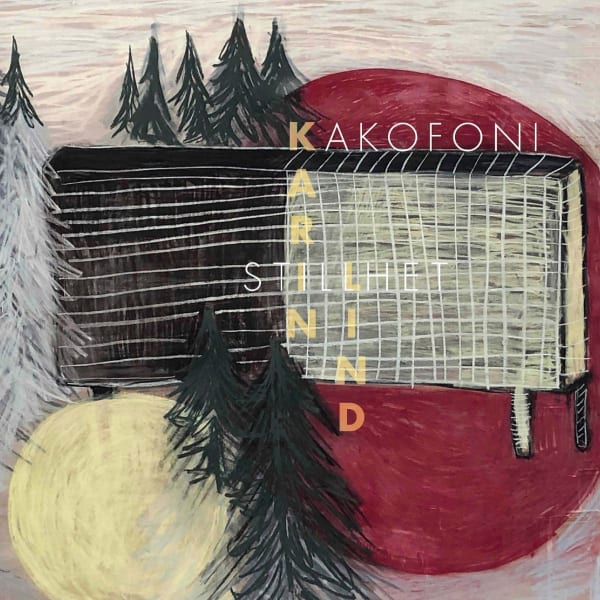
In conversation with Karin Lind and Ann-Marie Tung Hermelin
26 Sep 2024In Conversation: artist Karin Lind with author Ann-Marie Tung Hermelin Thursday Sept 26 / 6:00 pm We are thrilled to welcome Ann-Marie Tung Hermelin to...Read more -
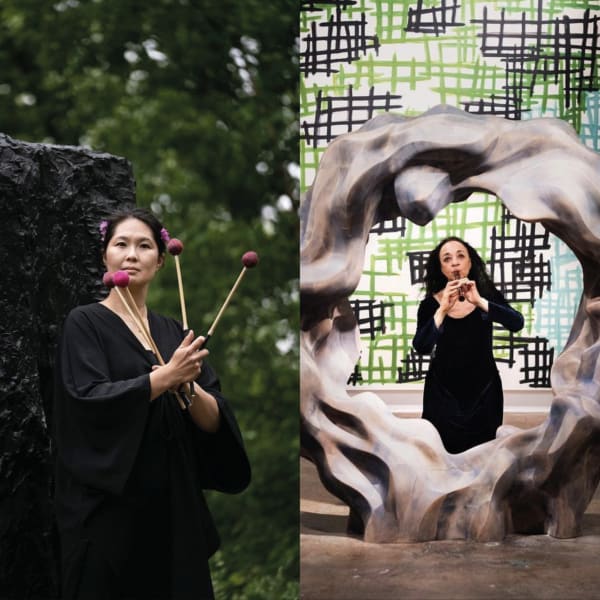
Concert with Mika Takehara and Malou Harris Meilink
20 Sep 2024We are thrilled to invite Malou Harris Meilink and Mika Takehara to the gallery for a captivating evening concert, set against the backdrop of Karin...Read more -
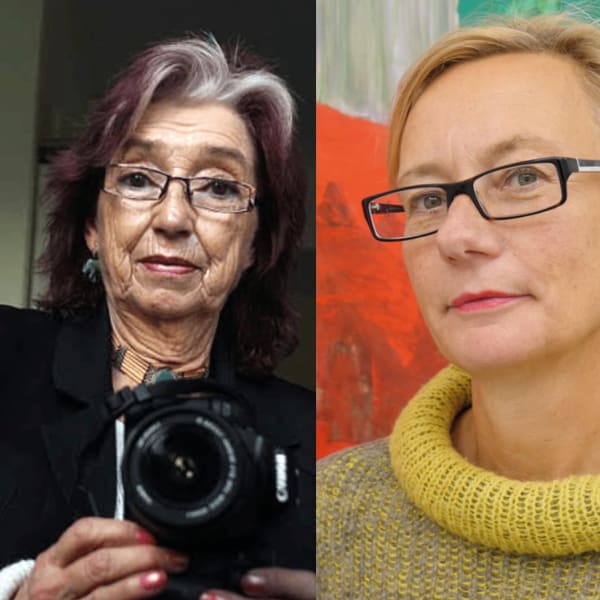
Artist Talk with Jessica Kempe and Karin Lind
11 Sep 2024ARTIST TALK Wednesday Sept 11 / 6.30 pm We are thrilled to welcome Jessica Kempe to the gallery for a conversation with Karin Lind on...Read more -

Concert with Cellist Chrichan Larson
16:00 – 18:00 1 Sep 2024Sunday, September 1, 16.00 — 18.00. Please join us for a Sunday afternoon concert with renowned cellist Chrichan Larson. Chrichan Larson is active as a...Read more
























